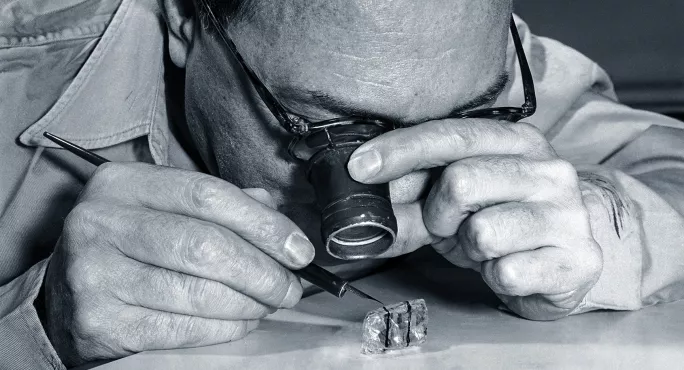Education reform must make clear purpose of inspection

Several years ago, now, I spent many months trying to extract information from Education Scotland about the length of time some schools were going without an inspection. After much toing and froing and an appeal to the information commissioner, I eventually got a list of all the schools in Scotland and the date on which they were last inspected.
I then enthusiastically wrote an article based on the figures, which showed that some schools had not been inspected for 16 years and more than a fifth of all schools had not been inspected for over a decade. Feeling satisfied with a bit of investigating done well, I sat back and waited for the response.
The piece gained traction and the figures Tes Scotland uncovered resulted in first minister Nicola Sturgeon being grilled by the then Scottish Conservative leader Ruth Davidson. In truth, however, our core audience was distinctly underwhelmed. Essentially, the response from teachers to our revelations about how long schools were going uninspected was this: so what?
That prompted a change of tack. Instead of focusing on the figures we started to ask, did they matter?
After the initial story on the stats, Tes Scotland followed up with another article, which actually explored whether or not we should bother with inspection and what we know about the impact it has on education outcomes.
As it turned out, there was precious little evidence to uncover. More on that later.
- Long read: Why do we bother with school inspections?
- Covid: School inspection to focus on ‘recovery visits’
- News: Education Scotland to be ‘substantially reformed’
- Quick read: Some schools not inspected for more than 15 years
Now, the Scottish Conservatives have replicated that Tes Scotland FoI from four years ago, and yesterday they showed that 981 out of the country’s 2,372 state schools had not been inspected for at least a decade (before 2012) - around 40 per cent of schools.
Two schools in Aberdeenshire - Aboyne Primary and Insch Primary - were last inspected in 2004, although that had already been highlighted last October.
Scottish Conservative MSP and shadow education secretary Oliver Mundell has, this week, described the situation as “deeply concerning for parents, pupils and teachers”.
He says it is “absolutely appalling and completely unacceptable” that two schools have not been inspected since “way back in 2004”, and is calling for the Scottish government to restart the inspection process “urgently” in order “to get on top of this growing backlog”.
He suggests that regular inspections give parents insight into “how their child’s school is performing” and also tell schools “what they need to do to improve”.
But it has been a long time since Scotland has had the goal of inspecting a school at least once during a child’s time there. Rather, Education Scotland uses “a sampling approach” as opposed to “a cyclical model”.
An annual sample of 120 schools is selected so the body can provide evidence for the National Improvement Framework - which tracks the performance of the Scottish education system - although more schools than this are inspected in total.
There were 252 inspections carried out in 2018-19, the last full year of uninterrupted inspection. That was a rise of 38 per cent on the previous year, when 182 inspections were undertaken, and the highest number since 2010-11, when the total was 279.
Yet, even with a higher rate of inspection, most schools are still unlikely to be inspected more than once every 10 years.
So how much inspection is enough? And as those teachers back in 2018 pointed out - what do we hope to gain from it?
In 2018 I spoke to Lindsay Paterson, professor of education policy at the University of Edinburgh, who said there was little research evidence about the impact of inspections. But he said the most likely impact of inspection - based on the scant evidence - is that it leads to improvement by encouraging self-evaluation and concentrating teachers’ attention on improvement and how to measure it.
So, we should care about the frequency of inspection, he said, because we need more of it if we want that focus on improvement.
In 2018 I also spoke to the academic Melanie Ehren who is now a professor in educational governance and director of the research institute LEARN! at Dutch university, the Vrije Universiteit Amsterdam.
She said that inspection can become less frequent when standards and expectations have had time to bed in and become well understood - but also that regular inspection was still important as it “reinforces expectations and the standards on quality”.
The Scottish government is in the midst of reforming some of the key agencies in Scottish education and has already committed to removing the inspection function from Education Scotland and creating an independent inspectorate.
Many who work in schools will tell you that bowing to Tory demands to restart inspection - just as the first national exams since 2019 are upon us, and potentially a bit of breathing space - would be ill-advised.
But the drive to reform national education bodies offers an opportunity to finally make it clear why we have inspection in Scotland, and what we want it to achieve.
Emma Seith is a senior reporter at Tes Scotland. She tweets @Emma_Seith
You need a Tes subscription to read this article
Subscribe now to read this article and get other subscriber-only content:
- Unlimited access to all Tes magazine content
- Exclusive subscriber-only stories
- Award-winning email newsletters
Already a subscriber? Log in
You need a subscription to read this article
Subscribe now to read this article and get other subscriber-only content, including:
- Unlimited access to all Tes magazine content
- Exclusive subscriber-only stories
- Award-winning email newsletters
topics in this article



